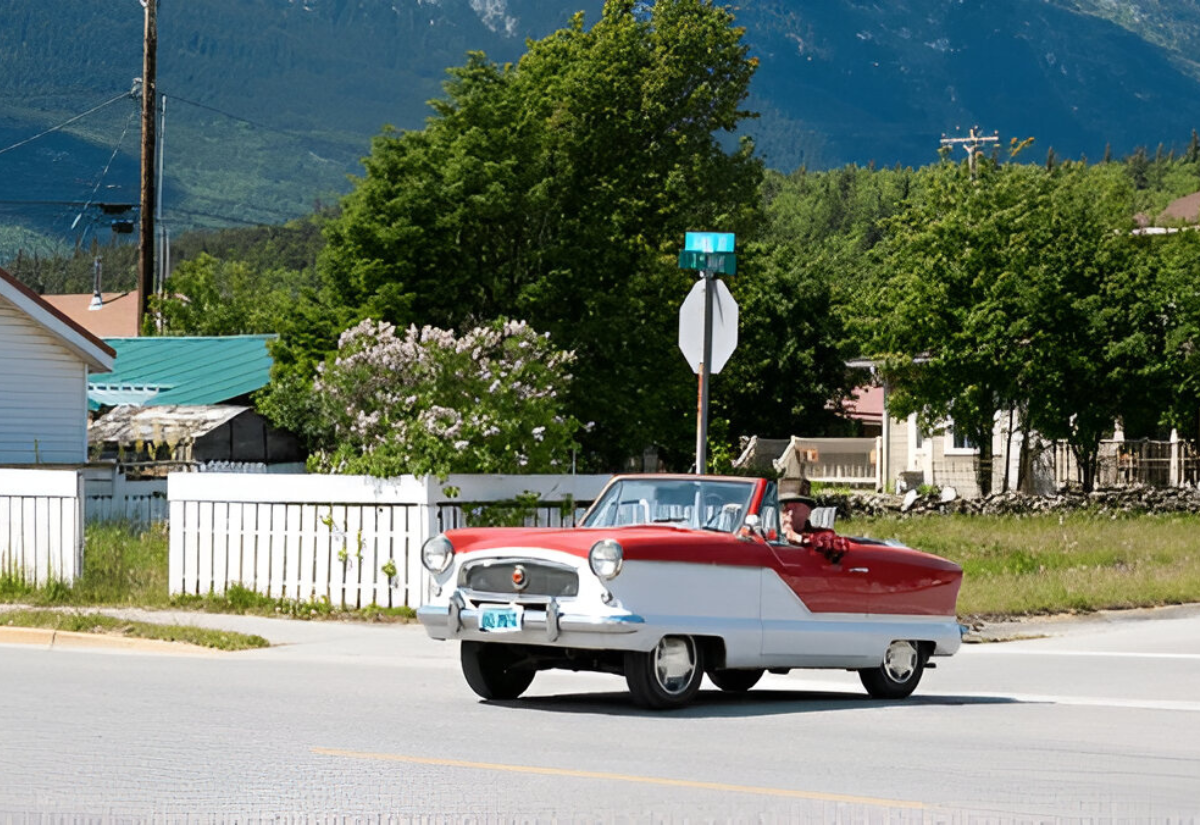Introduction
The Nash Car Company holds a special place in American automotive history. Known for its forward-thinking designs and practical engineering, Nash became a symbol of innovation during the early and mid-20th century. From its beginnings as an independent carmaker to its later role in shaping larger automotive groups, the company left behind a legacy that still attracts collectors, historians, and enthusiasts today. Understanding the story of Nash is more than just learning about cars—it’s about tracing the evolution of ideas that helped define modern motoring.
The Origins of Nash Car Company
The Nash Car Company was founded in 1916 by Charles W. Nash, a former president of General Motors who believed in building cars that combined practicality with forward-looking design. His vision was simple but powerful: create vehicles that were reliable, affordable, and equipped with features that made everyday driving easier for ordinary Americans.
From the very beginning, Nash focused on blending comfort and innovation. Unlike many carmakers of the time who concentrated solely on mechanical durability, Nash aimed to design automobiles that also reflected changing lifestyles. This included offering cars with closed bodies, better insulation, and more user-friendly interiors—qualities that were ahead of their era.
Several milestones marked Nash’s early entry into the automotive market. The company introduced some of the first mass-produced cars with features like air conditioning and unibody construction. These breakthroughs set Nash apart from competitors and gave it a reputation as a brand willing to experiment and lead rather than follow. Within just a few years, Nash became known as a carmaker that balanced practical needs with modern comforts, laying the foundation for decades of innovation that followed.
Iconic Nash Car Models Through the Years
Throughout its history, the Nash Car Company produced a number of vehicles that stood out in both design and engineering. These models helped shape the company’s reputation and gave it a lasting place in automotive history.
One of the most memorable examples was the Nash Ambassador, a car that showcased the brand’s focus on comfort and luxury at a time when many competitors were still emphasizing basic functionality. The Ambassador became known for its roomy interiors, stylish lines, and reliable performance.
Another landmark creation was the Nash Rambler, which many consider one of the first true compact cars in America. Introduced in the post-war era, the Rambler offered practicality, efficiency, and affordability, appealing to a wide range of drivers. Its smaller size was unusual for the time, but it set a trend that would grow in popularity in later decades.
Design played a big role in Nash’s success. Rounded bodywork, innovative use of aerodynamics, and attention to passenger comfort gave Nash cars a look and feel that separated them from others on the road. Engineering was equally impressive: Nash was one of the first companies to experiment with unibody construction, which improved safety and ride quality.
Together, these models and innovations highlighted Nash’s willingness to take risks and introduce fresh ideas—traits that made the company stand out among American automakers of its era.
Innovation and Contributions to the Auto Industry
The Nash Car Company was more than just another American automaker—it was a pioneer in introducing technologies and ideas that shaped the way cars were designed and built. While many brands focused only on durability or performance, Nash looked at how cars could improve the everyday driving experience for families, commuters, and travelers alike.
Safety and Comfort Features That Were Ahead of Their Time
Nash was one of the earliest carmakers to focus on comfort and passenger safety. It introduced features like weatherproof cabin insulation, reclining seats, and advanced heating and ventilation systems when these were rare in most vehicles. Nash was also the first U.S. company to offer built-in air conditioning, a luxury that later became standard across the industry. These innovations made cars feel less like machines and more like personal spaces designed for people’s comfort and well-being.
Influence on Car Design and Engineering Standards
Beyond passenger features, Nash played a key role in setting engineering benchmarks. Its adoption of unibody construction—a method where the body and frame are built as a single unit—improved structural rigidity and safety while reducing vehicle weight. This idea, though unusual at the time, became a foundation for modern car manufacturing. Nash’s emphasis on aerodynamics, sleek body shapes, and efficient use of space also influenced the look of cars in the decades that followed.
The Merger and Evolution Beyond Nash
As successful as the Nash Car Company had been on its own, the rapidly changing automotive market of the mid-20th century made independence difficult. Rising competition, higher production costs, and the demand for constant innovation pushed smaller automakers to consider partnerships and mergers in order to survive.
In 1954, Nash merged with the Hudson Motor Car Company to form American Motors Corporation (AMC). This was one of the largest corporate mergers in U.S. history at the time and marked the beginning of a new chapter for both brands. By combining resources, AMC aimed to compete more directly with industry giants like Ford and General Motors.
After the merger, the Nash name slowly began to fade. The final cars to carry the Nash badge were produced in the late 1950s, as AMC shifted its focus toward new models such as the Rambler. Though the Nash brand disappeared, many of its ideas lived on through AMC’s vehicles. The compact car strategy, emphasis on comfort, and willingness to experiment were all values that Nash had pioneered and AMC continued to build upon.
While Nash no longer existed as a standalone company, its influence stretched far beyond its years of independence. The merger ensured that its DNA carried forward, shaping cars for decades to come under the AMC umbrella.
Collectibility and Enthusiast Culture Today
Although the Nash Car Company ended more than half a century ago, its vehicles continue to spark interest among collectors and classic car enthusiasts. Vintage Nash models, especially the Ambassador and the Rambler, represent an era when design, innovation, and practicality came together in unique ways. Their distinctive styling, combined with the company’s historical importance, makes them valuable pieces of automotive heritage.
For many collectors, owning a Nash is about more than driving a vintage car—it’s about preserving a piece of American motoring history. The rarity of these cars today adds to their appeal, as each surviving model tells a story of creativity and engineering that was ahead of its time.
Restoration Challenges and Availability of Parts
Restoring a Nash can be rewarding but also challenging. Since production ended decades ago, original parts can be difficult to find. Enthusiasts often rely on specialty suppliers, salvage yards, or reproduction parts to complete restorations. The complexity of older technologies, such as early unibody frames or factory-installed air conditioning systems, also adds to the difficulty. Still, for dedicated collectors, overcoming these challenges is part of the enjoyment.
Auction Values and Historical Significance
At auctions and classic car shows, well-preserved Nash models often attract attention. While prices can vary depending on condition, rarity, and model year, Ambassadors and early Ramblers tend to command the highest interest. Beyond their monetary value, Nash cars are celebrated for their historical role in shaping modern vehicle design. Collectors see them not just as cars, but as milestones in the evolution of the American automotive industry.
The Legacy of Nash Car Company in Modern Automotive Culture
Even though the Nash Car Company no longer exists as a brand, its influence continues to be felt in the automotive world. Nash is remembered as a company that dared to be different, blending practicality with innovation at a time when many automakers followed predictable paths. Its early adoption of technologies like unibody construction, factory-installed air conditioning, and compact car design reshaped the industry and paved the way for modern standards.
Culturally, Nash cars represent a snapshot of American life in the first half of the 20th century. They are often featured in museums, classic car shows, and enthusiast clubs, where their distinctive style and engineering are celebrated. Car historians frequently point to Nash as an example of how a relatively small company could influence the direction of an entire industry through creativity and vision.
For enthusiasts, the brand lives on through restored vehicles, historical societies, and the passion of collectors who keep its memory alive. To many, Nash is more than a defunct automaker—it’s a symbol of ingenuity and independence that helped shape the identity of American automobiles.
Conclusion
The story of the Nash Car Company is one of vision, innovation, and lasting influence. From its early beginnings under Charles W. Nash to its groundbreaking designs and eventual merger into American Motors Corporation, the company left behind more than just cars—it left a legacy of ideas that helped shape modern automotive history.
Today, Nash vehicles continue to capture the imagination of collectors and enthusiasts, serving as reminders of a time when creativity and practicality went hand in hand. While the brand name may have disappeared, its impact lives on in the industry standards and cultural heritage it helped create. In many ways, remembering Nash is not only about celebrating a company but also about recognizing the spirit of innovation that drives the automotive world forward.
FAQ
Q1: When was the Nash Car Company founded?
The Nash Car Company was founded in 1916 by Charles W. Nash, following his departure from General Motors.
Q2: What were the most popular Nash car models?
Some of the most popular models included the Nash Ambassador, known for comfort and luxury, and the Nash Rambler, often credited as one of the first true compact cars in America.
Q3: Why did Nash Car Company merge with other automakers?
Nash merged with Hudson Motor Car Company in 1954 to form American Motors Corporation (AMC). This move helped the company remain competitive against larger automakers like Ford and GM.
Q4: Are Nash cars valuable to collectors today?
Yes. Well-preserved Nash models, especially Ambassadors and early Ramblers, are sought after by collectors. Their value depends on rarity, condition, and historical significance.

